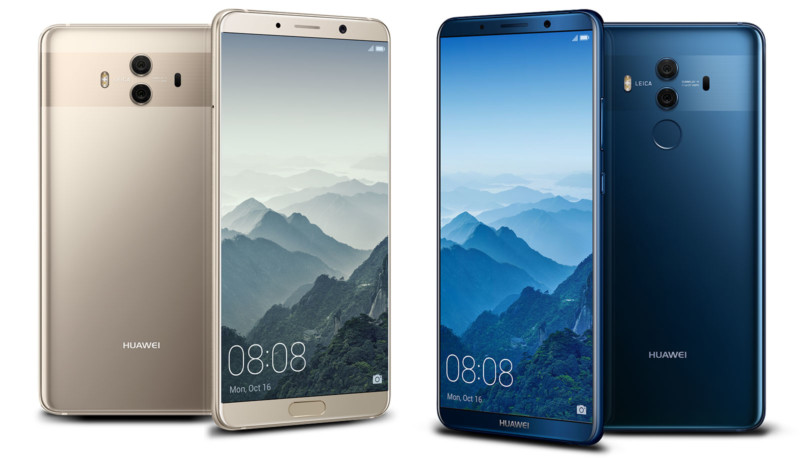The Huawei Mate 10 Pro Has Dual Leica Lenses and AI Photo Features
![]()
Huawei just unveiled two new smartphones, the Huawei Mate 10 and Mate 10 Pro. The phones include the world’s first Kirin AI processor as well as dual Leica cameras.

The Kirin 970 delivers “25x better performance and 50x greater energy efficiency” for AI-related tasks when compared to four Cortex-A73 cores. That’s thanks to the specialized NPU and Huawei’s HiAI mobile computing platform.
The smartphones “deliver real-time responses” to it users, including AI-powered Real-Time Scene and Object Recognition, and an AI Accelerated Translator. Huawei has also opened up the phones to developers to create “new and imaginative” AI apps.

“As we enter the age of intelligence, AI is no longer a virtual concept but something that intertwines with our daily life. AI can enhance user experience, provide valuable services and improve product performance ,” said Richard Yu, CEO, Huawei Consumer Business Group. “The HUAWEI Mate 10 Series introduces the first mobile AI – specific Neural Network Processing Unit, launching a new era of intelligent smartphones.”
![]()
To create the camera, Huawei partnered with Leica to co-engineer the dual-lens camera. Combining a 12-megapixel RGB sensor with a 20-megapixel monochrome sensor, the new dual cameras feature 2x lossless zoom, optical image stabilization, and lenses boasting the “world’s largest aperture” of f/1.6.
The Mate 10 series also has 4K video recording, which will go very nicely with the OLED display of the Mate 10 Pro’s 6-inch 18:9 screen. The Mate 10, on the other hand, has a 5.9-inch screen with a 16:9 display.
![]()
The Pro version is also water and dust resistant.
![]()
The new AI tech creeps into the camera too. The Real-Time Scene and Object Recognition feature allows the smartphone to automatically choose camera settings based on the actual object or scene it’s photographing. The AI-powered digital zoom and motion detector allows for “clearer and sharper pictures” by selecting the best choice of the 4 autofocus systems: laser focus, phase detection focus, depth focus, and contrast focus.

There’s also a new 360-camera accessory available, capable of shooting 5K photos and 360-degree 2K videos with “multiple viewing modes.”
![]()
The Huawei Mate 10 will be available in Europe starting in late October for €699 (~$824), and the Huawei Mate 10 Pro will be available in mid-November for €799 (~$942). US pricing and availability will be announced at a later date.